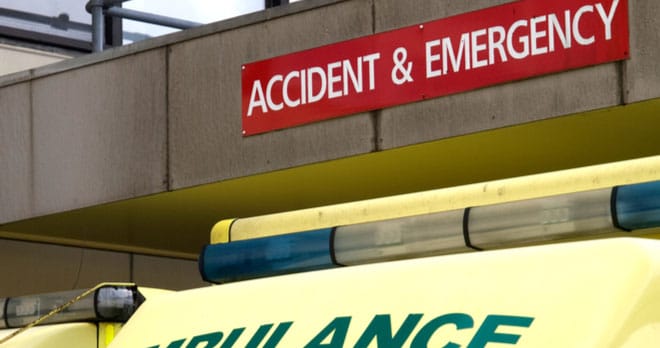We’re kidding ourselves if we think Accident & Emergency just has a ‘winter problem’

Dr Taj Hassan, president of The Royal College of Emergency Medicine is quoted in The Times as predicting “another unrelenting and challenging winter”. He said that the College would be “bringing out guidance to help hospitals maximise resources and support staff in managing the extra demand”.
But would it shock you to find out, during this mild autumn and after a long hot summer, more than 50% of A&E units are already in the “red zone”?
The traffic light system
A&E performance is judged against the following simple criteria:
- To remain in the “green zone” 95% of patients must seen, admitted, transferred or discharged within four hours of arrival.
- To remain in the “amber zone” more than 85% of patients must seen, admitted, transferred or discharged within four hours of arrival.
- The “red zone” is when those figures fall below 85% and where many patients receive treatment by way of “corridor medicine”.
Statistics released by the Royal College of Emergency Medicine show only 15 out of 133 reporting trusts were in the “green zone” during October 2018.
Most shockingly these figures represent no change from August 2018, and targets for A&E waiting times have not been consistently met since July 2015.
The cause
Increase in demand for A&E services is not a new phenomenon, there has been steady growth over the last 25 years but in recent years a watershed moment has been reached, with much debate as to its cause.
A lack of suitable GP appointments, the development of a culture which requires an “immediate cure” and a lack of confidence in other treatment pathways have all been cited as possible causes. However the issue is far more systemic and harder to pin point than any one of these discreet issues might suggest: it comes down to chronic underfunding of the NHS as a whole, coupled with an aging population.
Dearth of investment in preventative medicine in particular has led to increased pressure on A&E. Over-70s account for 35% of emergency admissions, if more focus was placed on investment in services that promote the general health of this age group within the community, it would likely result in fewer admissions to A&E.
At the other end of A&E, the elderly tend to require longer stays in emergency beds before discharge, once again due to lack of investment in services within the community to ensure that they are supported adequately when they leave hospital. This then creates a block to new emergency cases being admitted and results in longer wait times for new patients.
The implications
When need outstrips resources, staff are forced to focus on damage limitation. A recent Supreme Court ruling reinforced that even non-medically trained staff in A&E departments owe a duty of care to patients but when medics and other frontline staff are faced with a “red zone” environment, it is difficult to both meet demand and maintain high standards of care.
Acute illness or injury will usually be the reason for an A&E visit, and any delay in access to treatment can have a significant impact upon patient outcomes. There are no two ways about it, the current squeeze on emergency medicine is resulting in patient safety being compromised.
Increased waiting times and delays in access to care will inevitably lead to more claims against the NHS for negligent emergency treatment and a trend towards this is already emerging. Figures contained in NHS Resolution Annual Report and Accounts identified a 7% increase in A&E claims in 2017/18 when compared to 2016/17.